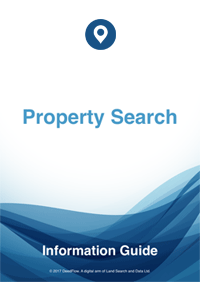How to Remove a Mortgage Entry
Contents
Article Summary
When your mortgage term expires and has been paid off it is normal practice for your mortgagee to remove the entry at the Land Registry themselves. They can do this online and it is only a fleeting exercise for them. Many people assume that they do this all the time, only to find months or years later that they have not done so. If they fail to do so you should contact them and ask them why they haven't removed it. They may insist that it is your responsibility to do so. This article explains how to proceed in such circumstances, and what to do when your final mortgage payment is due to ensure the entry is removed by them.
Redemption of Mortgage
A mortgage is redeemed when you have finished paying for it. It is a charge on the property, i.e. it burdens the property with the amount outstanding. Normally it has to be paid off when you sell your house. If the mortgage payments you are making naturally come to an end during your ownership of the house you will need to:
- Ensure that the mortgagee has removed the mortgage entry from the Title Register at the Land Registry
- Obtain an up to date copy of the Title Register and Title Plan so that you can check the mortgage has been removed, and so that you have a copy of your ownership documents.
You should not assume the Land Registry know that the mortgage has been redeemed because your mortgagee usually removes the mortgage entry itself. As the Land Registry do not know what payments you make they have no way of knowing when the mortgage is redeemed unless someone tells them.
Removing the Mortgage Registration
Your mortgage will have been entered in the C section of the Title Register. Most mortgagees will remove this electronically immediately following redemption of the mortgage, and therefore an up to date copy of the Title Register will not show the mortgage entry. The Title Register only shows subsisting entries and therefore if the mortgage still appears, the mortgagee has failed to remove it.
What to do if the Mortgagee does not remove it
If you have paid off your mortgage but the mortgagee does not remove the registration entry at the Land Registry, the first thing you should do is to contact your mortgagee to discover why they have not discharged your mortgage. As they can do this online it is obviously much easier to redeem it this way. If they tell you that you should have sent them a completed Land Registry Form DS1, you will need to do this. It would be bad practice for a mortgagee to insist on redemption this way, but some mortgagees still do it.
You can download Form DS1 from the Government website for free. You will then need to complete it and send it to the Land Registry with Form AP1 and Form ID1 (more free downloads)
If your House is Unregistered
If your house is not registered, you should forward to the mortgagee Form DS1 (Discharge of charge) and ensure it is returned to you, duly executed, together with the Associated Documents. You should then take these to a solicitor and ask him to apply for first registration at the Land Registry.
Title Register
The Land Registry Title Register holds data relating to the property ownership, purchase price, mortgage, tenure, covenants, rights of way, leases and class of title.
£19.95Title Plan
The Title Plan shows an outline of the property and its immediate neighbourhood, and uses colours to identify rights of way, general boundaries and land affected by covenants.
£19.95Associated Documents
Deeds creating Restrictions, Covenants, Easements, etc. are often kept digitally by the Land Registry and made available for sale due to their invaluable detail and content to assist in further understanding the Restrictions, etc.
£29.95


